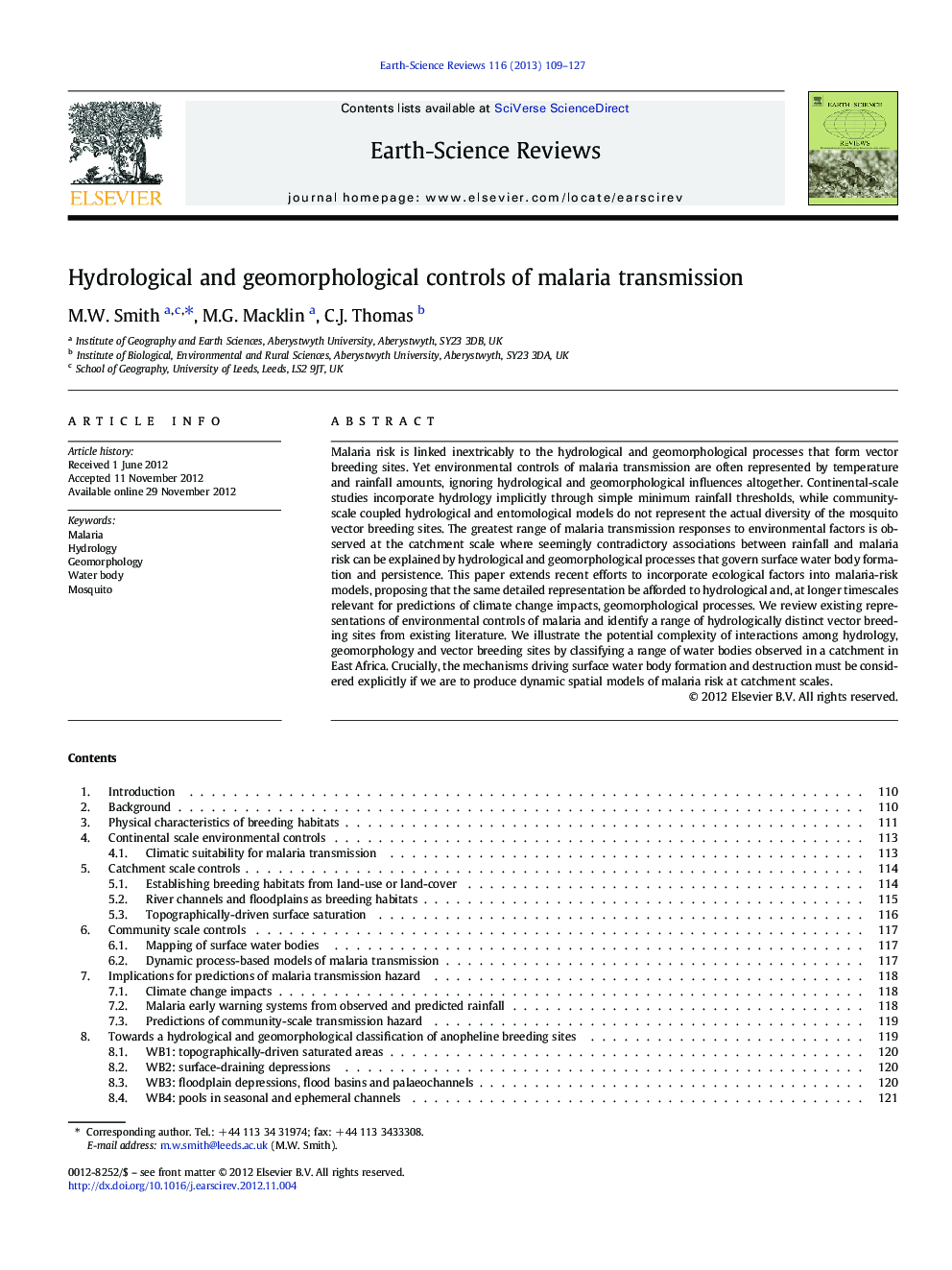| Article ID | Journal | Published Year | Pages | File Type |
|---|---|---|---|---|
| 4725879 | Earth-Science Reviews | 2013 | 19 Pages |
Malaria risk is linked inextricably to the hydrological and geomorphological processes that form vector breeding sites. Yet environmental controls of malaria transmission are often represented by temperature and rainfall amounts, ignoring hydrological and geomorphological influences altogether. Continental-scale studies incorporate hydrology implicitly through simple minimum rainfall thresholds, while community-scale coupled hydrological and entomological models do not represent the actual diversity of the mosquito vector breeding sites. The greatest range of malaria transmission responses to environmental factors is observed at the catchment scale where seemingly contradictory associations between rainfall and malaria risk can be explained by hydrological and geomorphological processes that govern surface water body formation and persistence. This paper extends recent efforts to incorporate ecological factors into malaria-risk models, proposing that the same detailed representation be afforded to hydrological and, at longer timescales relevant for predictions of climate change impacts, geomorphological processes. We review existing representations of environmental controls of malaria and identify a range of hydrologically distinct vector breeding sites from existing literature. We illustrate the potential complexity of interactions among hydrology, geomorphology and vector breeding sites by classifying a range of water bodies observed in a catchment in East Africa. Crucially, the mechanisms driving surface water body formation and destruction must be considered explicitly if we are to produce dynamic spatial models of malaria risk at catchment scales.
